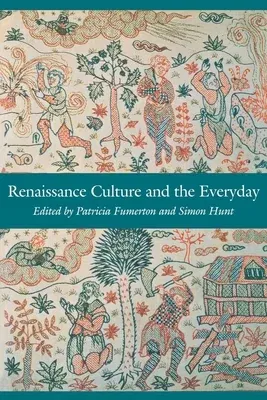It was not unusual during the Renaissance for cooks to torture animals
before slaughtering them in order to render the meat more tender, for
women to use needlepoint to cover up their misconduct and prove their
obedience, and for people to cover the walls of their own homes with
graffiti.
Items and activities as familiar as mirrors, books, horses, everyday
speech, money, laundry baskets, graffiti, embroidery, and food
preparation look decidedly less familiar when seen through the eyes of
Renaissance men and women. In Renaissance Culture and the Everyday,
such scholars as Judith Brown, Frances Dolan, Richard Helgerson, Debora
Shuger, Don Wayne, and Stephanie Jed illuminate the sometimes surprising
issues at stake in just such common matters of everyday life during the
Renaissance in England and on the Continent.
Organized around the categories of materiality, women, and
transgression--and constantly crossing these categories--the book
promotes and challenges readers' thinking of the everyday. While not
ignoring the aristocratic, it foregrounds the common person, the
marginal, and the domestic even as it presents the unusual details of
their existence. What results is an expansive, variegated, and sometimes
even contradictory vision in which the strange becomes not alien but a
defining mark of everyday life.

